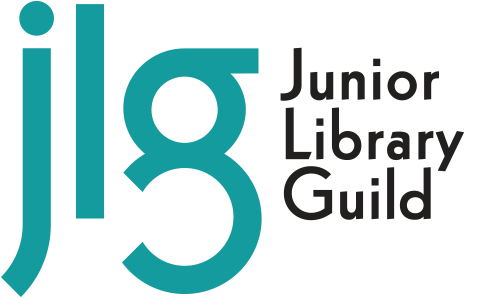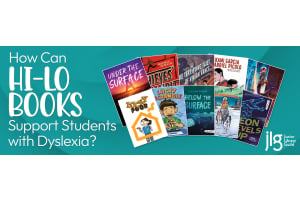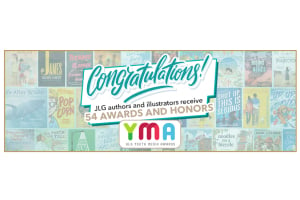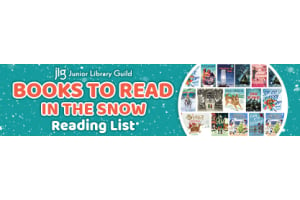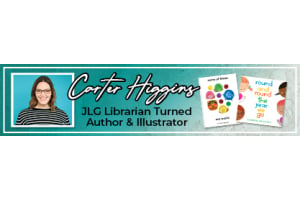How to Use Your Hands, Q & A with Torrey Maldonado

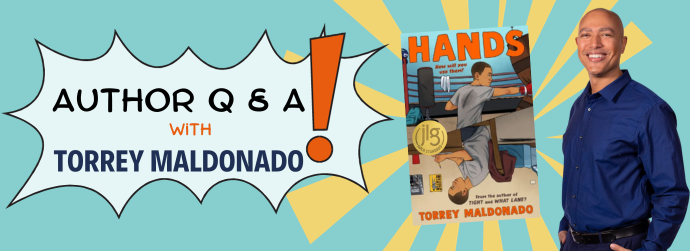
Introduction
As a middle school teacher who has taught in inner-city Brookyln for almost 30 years, Torrey Maldonado’s wellspring of source material comes from his professional career and learned experiences growing up in a Brooklyn, New York project. Like every middle school student, Maldonado came to many crossroads in his young life, and had to decide which way he would turn— “End up like Luke Skywalker? End up like Darth Vader?” And with a mother like Yoda—very short, but full with The Force—Torrey had all kinds of unique influences who helped him learn how to use his hands for good.
Maldonado said, “The choices that a young person makes—even the simple ones—could easily swing them from the dark side of The Force to the light side of The Force and vice versa.”
HANDS, a finalist for the Jane Addams Award for Peace and Justice, a 2023 Nerdy, a 2023 Fuse #8 and SLJ Best Middle Grade Book, a 2023 Cybils Finalist, and a Best Book of the year in both the Chicago Public School Library and New York Public Library, is very much Maldonado’s journal filled with gentle generosity from when he was young. Read on to learn more about Maldonado’s unconditional love for his mother, why every color in the rainbow of humankind and books is vital in shaping our identities, and how readers can find a safe outlet for times when they feel overwhelmed with heaviness of our world.
PLUS, you can enter to win a FREE signed copy of HANDS by liking our Instagram post!
Q: What was the inspiration for your book HANDS?
A: The inspiration for my book HANDS is the same inspiration I use for all my books: I want to not just write a book but take readers on a special roller coaster ride. I want it to be fun so that no one will want to quit reading it or get bored and put it down. HANDS is pretty short—about 125 pages—and Meg Medina, the 2023-2024 National Ambassador for Young People’s Literature, has praised my book for its length. She loved how the story was quick and fun and she just blew through it! That’s what I want for my readers—I want this to be a fast and enjoyable experience, and then, when it’s over, I want them to look back at that rollercoaster ride and think about all the fun they had. I hope readers want to get back on the ride! Maybe they might feel compelled to read another one of my titles…?
Q: Was this story autobiographical?
A: HANDS was the book I needed when I was Trev’s age. Critics and fans say Trev feels so real and here’s a confession, he is real—he’s a younger me and almost everything he experienced is what I went through. I remember that there wasn’t a book that could help me deal with what I was juggling at that age, and the books I was given were heavy. They were either heavy in page count—tomes, you know? —or they were too heavily written (like serious, grave dialogue) and I wanted to make my books different. I wanted to write in light ways about heavy topics. Sidenote: these “heavy topics” are not heavy to young readers who discuss these topics daily with their peers.
Recently, a librarian from Missouri told me her students really enjoyed HANDS. In addition to being a librarian, Kirsten Shaw was the MASL past president and creator of the MASL Dogwood Excellence in Non-Fiction List. Right before their winter break, she was hoping I’d make a video for her students that said, “Hi everyone, it’s Torrey Maldonado and your teachers—Dr. Barabas and Ms. Shaw—and I have put together a special holiday package …” She took a video of her students peering into their bags and taking my out book What Lane? Wow, you should have seen their responses! It was so heartwarming the ways these innocent fifth graders were genuinely excited to read a book about what some adults might call “serious” topics, but they knew it wouldn’t make them feel so heavy inside. That really hit the mark for me.
Q: What did you learn about yourself while writing this book?
A: While I was writing this book, I thought a lot about sports psychology. HANDS revolves around boxing and a central theme in the book is whether you're going to use your hands to build, celebrate, and protect, or if you’re going to use your hands to knock down others and be destructive. Trev really loves to draw, and people in his neighborhood think he could be the next Jerry Craft, however, Trev feels like he must protect his family instead of draw, so he learns how to box. You know, a lot of times young people feel that they're alone and they're in the ring by themselves, facing an issue or opponent. This feeling that they are alone isn’t true. If you look at the sport of boxing, just like you look at HANDS, we discover that Trev has people is his corner, and that’s true for every young person—we all have a corner person or corner people. HANDS is about understanding that you can do a lot as an individual, however, you can do way more with the village—with your team.
There's a scene in the book when Trev is walking by a school, and he looks up at a sign that reads, “It takes a village to raise a child.” Trev doesn’t feel that’s true because he doesn’t feel like he’s a part of a village. HANDS raises the question, does every kid have a village? Or how do you know if you belong to a village? Who are the helpers or supporters in your village? Once you start answering these questions, you realize that you do have corner people—you have a whole village that you can rely on. When I was a kid, I had a hard time identifying or belonging to my village. I felt responsible for my family dynamics and that made it hard for me to see past the obstacles in front of me, but I have learned that everyone has a village—we just need some reassurance.
Another thing I realized through writing this book and through the response of my readers is that I’m very connected and share similar experiences with a lot of young people. This book shows that on the surface we might look, sound, or dress differently, but our underlying issues and dynamics really connect us. We're all in one current, one stream of humanity.
There's a boy—E. Train, from California—and he once asked if he could interview me because he felt like HANDS was his life; he really connected with Trev. When I hopped on our interview meeting and looked at the video, I didn’t understand what E. Train and Trev had in common. Trev’s a Black boy with Latino heritage too, living poor in a Brooklyn projects, with no biological father and an abusive stepfather. When I met E. Train, I learned that he’s a Jewish boy from California with a mother and father who support his peaceful nature. E. Train is a huge bibliophile—he loves books! I didn’t really see the same conflict in E. Train’s life that I saw in Trev’s, so I couldn’t initially understand why he connected with my character, but when we started talking with each other, E. Train painted me a better picture. E. Train told me that HANDS resonated with him because he loves his mother, and Trev portrays such unconditional love for his mother. E. Train wants to protect his family while staying a rainbow in somebody else’s cloud and wants to add more brightness to the world, and then there were other overlaps that we connected on as well.
After the interview, E. Train got in touch with me and asked if he could send me a gift, a bookmark he made. The bookmark he designed had clouds, a rainbow, and Maya Angelou’s quote that read, “Be a rainbow in someone else’s cloud” because that’s a quote in HANDS that keeps reappearing throughout the story. I have taken E’s bookmark around the world! Every time I tell this story, I hold it up and tell the story of E. Train. I feel as though books have physical bindings—bindings that can bind lives together, like me and E. Train. These special bindings from books really help us hold on to one another.
Q: HANDS explores the complex relationships between your given family and your chosen family; does one support system outweigh the other?
A: When you talk about a support system, what comes to mind is a trampoline. If you have a trampoline, you’ll notice ropes or springs at the perimeter that connect to the base, and so asking if one part of Trev’s support system is more important than another part of his support system is like asking if one rope or spring that tethers the trampoline is more important than another. The answer is no, of course not. All these ropes or springs are vital to catching Trev when falls and then propelling him to higher heights of empathy, connectedness, clarity, and peace when he needs a boost.
Trev’s uncles aren’t blood-related—they are his chosen family—and they love him so deeply and look out for his wellbeing. I grew up in the projects that ranked one of the ten worst neighborhoods to live in in the United States, and what I learned growing up there was that you don’t refuse help. If someone offers help, you take it wherever you can get it. If you’re really thirsty and someone offers you water, you drink it, or if you’re really hungry and someone offers you food to eat, you eat it—and that goes the same for support extended to Trev. Trev realizes later in HANDS that the people surrounding him are trying to nourish him, feed him, empower him and then, in turn, he tries to do the same for Little Cole, his eight-year old neighbor.
You know, Trev’s mom is my mom, and the books revolves around her, but a lot of readers tend to zone-in on the male presence in HANDS like Trev’s uncles or P or Little Cole. Yes, they’re all a part of his support system, but did you notice that hanging up in Uncle Frankie’s garage is the quote that Trev’s mom recites from Maya Angelou? “Be a rainbow in someone’s cloud.” Uncle Frankie carries those words of wisdom because of Trev’s mom. HANDS is a book about women too and about how a one special woman helps impact men’s lives who in turn help impact her son’s life. I don’t want readers to forget that because HANDS was a love letter to my mother.
Q: Trev’s mom attempts to make the best out of a situation, like when she quotes Maya Angelou and says, “Be a rainbow in someone’s cloud.” How has this mentality impacted your life? Who do you think is the ultimate “rainbow” throughout HANDS?
A: Have you ever heard the danger of a single story? This concept plays out in different ways in our world like when some people say, “Author X is the storyteller of our generation!” but are they? In reality, a generation is made up of all different kinds of people, not just one thriving storyteller. When you look at a rainbow, you see all different bands of color, but when we hear about these book bans that are taking place across the country, it’s like people are trying to simplify a rainbow to one color. Guess what: it doesn’t work that way. The beauty of a rainbow is in every stripe of color, and the spectrum that it creates—just like in Trev’s support system. Each person is a different color in his spectrum of humanity. Each color is necessary and vital and offers its own unique vibrant variation; if you removed a single color, the vibrancy of the book would diminish. There’s that saying that people can see your “true colors shine through”, but the colors we see shine through Trev are the colors streaming into him from his village: Trev is a prism and refracts every color and person that has shined light his way. The love he gets from his mom shines through as well as his gentleness and artistic nature—every color shines through because so many different people have helped him get to where he is headed.
Q: Most of Trev’s uncles want a different and brighter future for him—one where he becomes educated, leaves the projects, and does not join a gang. Do our past experiences tether us to a certain future, or do we have the power to choose who we will become? How much of our identities are our own?
A: Earlier, I had mentioned that everyone from Trev’s support system was necessary for his rainbow—everyone played a key role in Trev’s life—and the same is very true of his identity. There are things that happened in Trev’s life (and in my life) that I wish hadn’t happened at the time (like my mom being abused and my wanting to protect my sisters from men who tried to manipulate them). But there’s this old television show that had a song that sang, “you take the good, you take the bad, you take them both, and there you have ‘The Facts of Life’”. We must take them both in life and that’s a hard truth, but how can we experience true joy unless we experience true pain? We can’t appreciate the rainbow without the storm. Think about Trev’s story—his sweetness is in direct contrast to the bitterness of his stepdad and Trev’s brightness contrasts with some of dark things happening around him in his neighborhood and home.
I once heard that a person’s identity is the total sum of all their life experiences plus all the people who they come in contact with. At his core, Trev is who he is, but he can also be molded and shaped into something new. That's why he identifies with Luke Skywalker, right? He is Luke, but, at the same time, he's walking down a slippery path and that’s why Uncle Larry tells him, “Solving things with anger—the Darth Vader way—won’t take the pain away. Won’t take you to a good place”. My uncles helped redirect me, just like a compass, but identity is a really tough thing to figure out. If you ask me, middle school novels do the best job of exploring identities in very real ways.
Q: Trev’s character is confronted with many hard feelings all at once: he grieves the death of his father, resents his stepdad for hitting his mom, and worries about protecting his mom, sisters, and Little Cole. Those emotions are a lot to carry for anyone—especially a twelve-year-old kid—but are very real and exist in our world.
If your readers feel overwhelmed by the “heaviness” of life, or the weight of their emotions, what advice would you offer them?
A: In my first book, Secret Saturdays, I talk about how the main character is like a shaken-up soda bottle with a cap on it. It doesn't look like it's going to explode, but the moment you twist that cap a little, it's going to POP! A lot of times, young people—people of all ages—get shook up by life, and sometimes they explode at the wrong time or on the wrong person. In Trev’s situation, he has boxing which gives him a place to explode (safely)—it gives him a release. Could you imagine what HANDS would be like if Trev didn’t have pads to hit or a place to work out? All those feelings bottled up inside with nowhere to go?
I hope that all young people find an outlet where they can release some of their shaken and stirred emotions—an outlet that doesn’t hurt themselves or anyone else. I would also suggest that adults encourage young people’s outlets, and not judge young people for their interests. I see that all the time. If the release or outlet is not hurting anyone, let young people release all that shaken-up soda inside of them. Let them keep going and expressing and releasing. HANDS helps show why that matters.
Q: Tell us more about the dichotomy between feeling “east and west”. Has there been a defining moment in your life where you have felt directed in two contrasting ways at the same time? How did you work through that situation?
A: My mom would recite quotes to me when I was growing up and I thought they were her quotes. She told me to be a rainbow in somebody else's cloud and I ran to school and told our teacher. Our teacher would ask us what we learned outside the classroom, so I raised my hand and told my class that mom taught me “Be a rainbow . . .”. My teacher told me that was a very sweet quote but asked me to see her after class. It was then that she told me that Maya Angelou came up with that quote! While this was a funny instance, it got me on this path of thinking quotes are pretty cool and impactful—like how do you take a life lesson and distill it into a quote?
I have a ton of books around my house with different quotes that I've collected from my mom, from people in my village, and quotes that I've made-up on my own. I’ll never forget when I made up the quote “east and west” that a voice in my head said, “That’s good. You better make sure to put that in a book!” And it really captures how I was feeling as Trev and how many of us feel at times—you can't walk east and west at the same time without being torn apart. For Trev, these are his Robert Frost moments and he’s at a fork in the road and doesn’t know which way to go.
I’ve had moments—a ton of them—where I felt east and west growing up. For instance, the rec center where Trev learns how to box is real and I trained there. I remember walking in there and thinking of how awesome it would be to learn how to fight. People started training me and telling me I was good, and I went home to my mom one night with a bruise on my face. She saw me and exclaimed, “What happened?!” I reassured her that my bruises weren’t from a street fight, but from boxing at the rec center. She sat me down and had the same conversation with me that Trev’s mom has with him in HANDS. She looks at the bedroom wall, covered in posters of boxers, and observes, “I remember when this wall was covered with the superheroes you drew”.
I told my mom what Trev tells his mom— “These guys can fight in real life. They’re superheroes too”. And that’s when I felt east and west, all at once. It’s the “east-west” moment that Trev expresses in that next chapter in HANDS. I felt like I was growing up in a neighborhood where lots of people don’t respect you if you want to write a book, but they’ll respect your strong right hook. My mom kept telling me that’s not my path, just like Trev’s mom and uncles tell him, so I felt very conflicted. A tough neighborhood requires you to be tough, and there’s nothing wrong with boxing or knowing how to handle your hands, but I think I chose the right route for myself just like Trev chooses the right route for himself.
Q: How are you using your hands currently, or what future projects are you working on?
A: I'm really excited because I'm in two anthologies publishing this January 30th and February 6th. There’s an anthology coming out on January 30th of this year called, “Everything I Learned About Racism I Learned in School” by New York Best-Selling Author Tiffany Jewell. She gathered a group of creatives and I feel SO honored she asked me to be a part of this project. In the same way that Trev tries to be a rainbow in people’s cloud, I’m trying to do that by sharing stories with young people that help them see the light in dark, racist situations and to question how to shine their lights. It’s an amazing book and I’m so ecstatic for it to be out!
I also am featured in a February anthology called “Relit” which is retellings of the classics. There are 16 different classic stories that are retold in modern settings with today's youth. My story explores Brooklyn lore with a backdrop of racism and classism; it shows how race and class can create labyrinths, mazes, and confusion in our world along with monsters, but it also creates heroes. Super excited to see “Relit” published!
Other upcoming works of mine that I’m excited for the world to see are my three picture books! The first is called, “Uncle” and that one publishes in the fall of 2025. “Uncle” and my second picture book—"Just Right”—share a similarity of showing how people who are not blood-related can be just as good as your best family or better. Everyone can be our family, “it takes a village”, and “Uncle” and “Just Right” show how mine and every village can be beautiful. My second picture book comes out in the spring of 2026. My third picture book is called “Little Artist” and is about how powerful art is, how it can illuminate dark times, and strong bond between a boy and his grandma. That comes out in the fall of 2026.
In the meantime, I’m also working on a new middle school novel.
Q: How can librarians and readers connect with you?
A: I love talking to librarians—they're some the smartest people on the planet. They are real life superheroes—I’d do anything to support them! Oh, and I love doing school visits. I've had over 30 years of group facilitation experience, so I've spoken to a range of crowds—from as large as about 5,000 people to as small as two people. A wild time was when I spoke at Yankee Stadium! And I've also had a lot of experience speaking to large group assemblies as well as small groups. I love interacting with young people and I'm invited across the country to speak sometimes. For example, I have a very unique and strong relationship with schools in Columbus, OH—right where the JLG headquarters is located! I think I’m becoming a Columbus favorite. Bexley City Schools was generous enough to fly me in for a three-school author visit and Beth P., a K-5 librarian in Columbus, uses my books as gradewide reads and often showcases how kids love them. Here’s a fun video of her Columbus students in a “Fan Face-Off” against me about one of my recent JLG Selections called What Lane? It’s a fun game show format video like the show “Are you Smarter than a 5th Grader?”
Teachers, librarians, readers, everybody can reach me at my website on my “Author Visits” page. Where it says “Contact Torrey”—that email comes directly to me, and I always respond! People can also follow and tag me on my social media below.
We know your elementary and middle school students will tear through HANDS! Add it to your next JLG Book Box by clicking here—we even have a few, limited edition, signed copies! Interested in adding middle school categories to your subscription? Check out our full list of offerings here!
